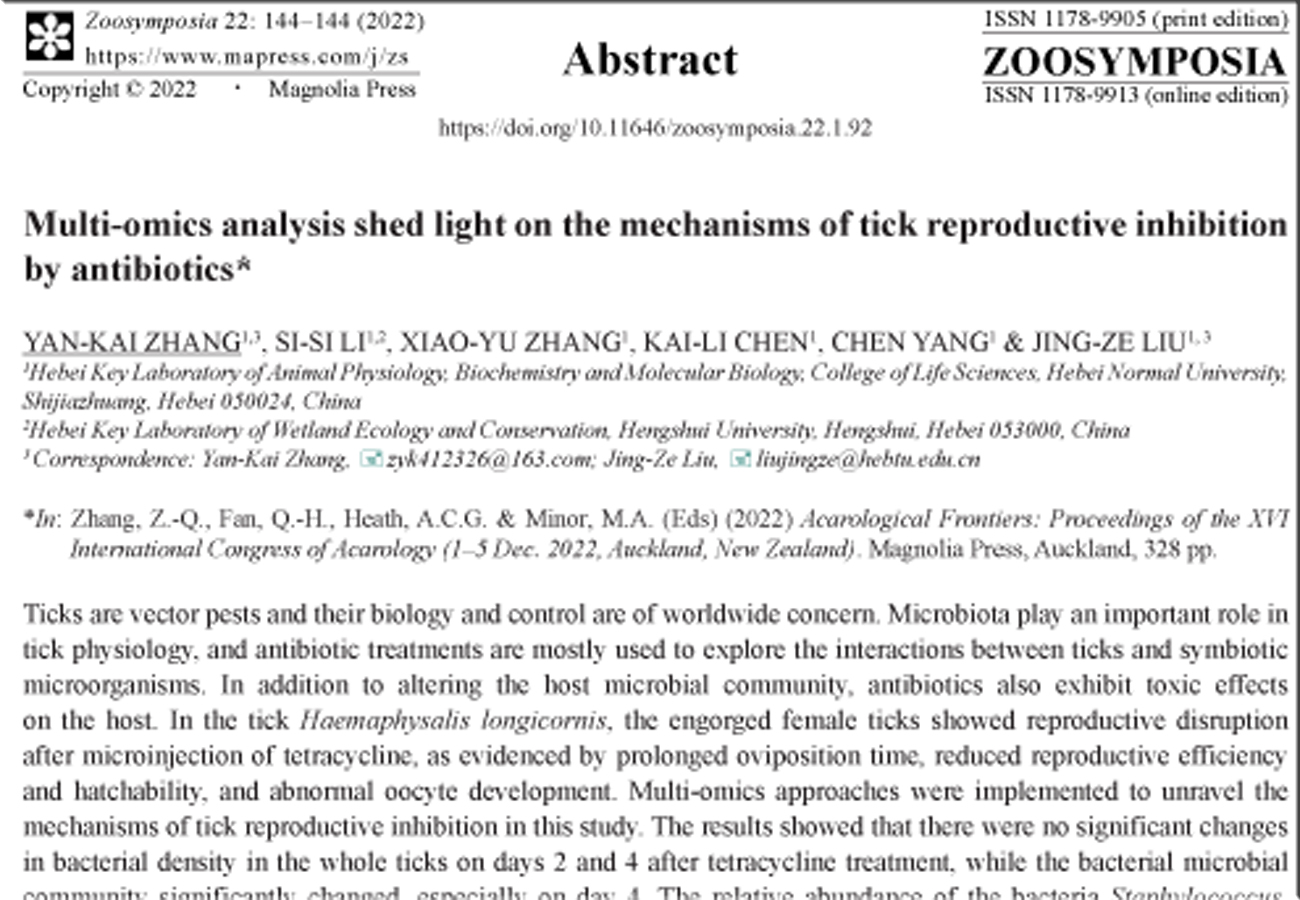Abstract
Ticks are vector pests and their biology and control are of worldwide concern. Microbiota play an important role in tick physiology, and antibiotic treatments are mostly used to explore the interactions between ticks and symbiotic microorganisms. In addition to altering the host microbial community, antibiotics also exhibit toxic effects on the host. In the tick Haemaphysalis longicornis, the engorged female ticks showed reproductive disruption after microinjection of tetracycline, as evidenced by prolonged oviposition time, reduced reproductive efficiency and hatchability, and abnormal oocyte development.
References
-

